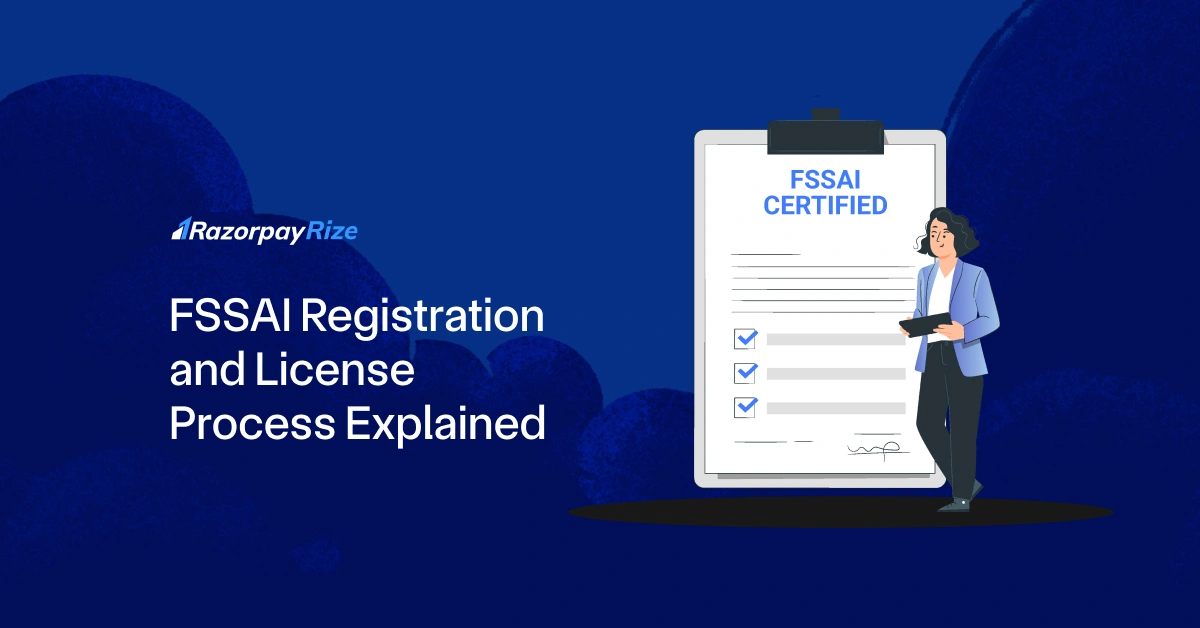A Letter of Credit (LC) is a financial tool used in trade transactions to ensure secure payments for sellers. It acts as a guarantee from a bank that the buyer's payment will be received on time and for the correct amount. This mechanism minimises risks in international trade. There are various types of LCs like sight credit, acceptance credit and revocable credit, etc.
Table of Contents
What is an LC (Letter of Credit)?
A Letter of Credit (LC) is a document issued by a bank that guarantees payment to a seller on behalf of a buyer, provided that certain conditions are met. This financial instrument ensures payment security and mitigates risks associated with cross-border transactions. The issuance of an LC involves specific conditions, like the submission of required documents, which the bank reviews before releasing funds. It provides bank guarantees and incurs fees that are essential for its operation.
Examples of Letters of Credit
International Trade Example: A U.S. company wants to buy machinery from an Indian exporter. The U.S. company requests its bank to issue an LC to the Indian exporter. Once the exporter ships the machinery and presents the required documents to their bank, they receive payment from the issuing bank, ensuring trust and mitigating payment risk.
Domestic Transaction Example: A large retail chain uses an LC to purchase inventory from a local supplier. The LC guarantees that the supplier will receive payment as soon as they fulfill the delivery conditions outlined in the agreement.
Basics of a Letter of Credit Transaction
Applicant
The buyer who requests the LC from their bank. They initiate the process by applying for the LC and specifying the terms and conditions of the trade.
Beneficiary
The seller who receives payment through the LC. They must present all required documents correctly to receive payment.
Issuing Bank
The bank that issues the LC on behalf of the applicant. They verify the buyer's creditworthiness and commit to making the payment when conditions are met.
Negotiating Bank
The negotiating bank in LC that examines documents presented by the beneficiary and facilitates payment. They ensure all paperwork matches LC requirements perfectly.
The process begins when the applicant approaches their issuing bank for an LC. The issuing bank then coordinates with the negotiating bank to establish terms and verify documents before releasing any funds.
Importance of Letters of Credit
Secure Payments
They ensure that sellers receive payments without requiring advance payments, reducing risk for both parties involved in the letter of credit.
Facilitate Cross-Border Transactions
LCs simplify complex international transactions by providing a standardised payment mechanism across different countries.
Secure Business Funding
They provide businesses with necessary funding while verifying creditworthiness, helping companies maintain healthy cash flow.
Financial Assurance
LCs offer security when buyers cannot pay, acting as a guarantee backed by reliable banking institutions.
Advantages of Letters of Credit
Ease International Trade: Simplifies complex transactions across borders by providing a structured framework for payment and documentation.
Foster Global Business Connections: Builds trust between trading partners by removing payment uncertainty and providing bank-backed guarantees.
Provide Flexibility: Customisable terms to suit various transaction needs, including payment timing, shipping requirements, and document presentation.
Parties to Documentary Credit
Commercial/Trade Parties: The buyer and seller form the core of the transaction, initiating and completing the trade deal.
Banks: Issuing and advising banks serve as intermediaries ensuring secure payment and proper documentation.
Related Entities: Shipping lines and insurers support the transaction by handling logistics and risk management aspects.
Types of a Letter of Credit
Sight Credit
A Sight Credit allows instant payment upon presenting the correct documents, providing immediate access to funds for sellers. For example, if a businessman needs quick access to cash after shipping goods, they can use this type of credit.
Acceptance Credit/Time Credit
Acceptance or Time Credit involves bills that are accepted upon presentation and paid on specified due dates. This type allows sellers to receive payments after a set period.
Revocable Letter of Credit
A Revocable Letter of Credit can be canceled or modified by the issuing bank without beneficiary consent, which limits its reliability in ensuring secure transactions.
Irrevocable Letter of Credit
An Irrevocable Letter of Credit guarantees payment once certified by the exporter’s bank. This type provides security for international transactions and is often preferred by exporters due to its reliability.
Confirmed Letter of Credit
A Confirmed Letter of Credit involves both issuing and confirming banks. The confirming bank guarantees payment to the beneficiary, holding equal liability as the issuing bank, ensuring that payments will be honored upon proper presentation.
Back-to-Back Letter of Credit
This type involves issuing a second LC based on the security provided by the first LC. It is commonly used to secure payments for suppliers in international trade transactions.
Transferable Letter of Credit
A Transferable Letter of Credit allows the primary beneficiary to transfer credit partially or fully to another beneficiary, typically a supplier. However, once transferred, the second beneficiary cannot transfer it further.
Restricted Letter of Credit
A Restricted Letter of Credit specifies a particular bank responsible for payment, limiting its scope compared to unrestricted LCs. This type is often used when specific banks are preferred due to their reliability.
Revolving Letter of Credit
A Revolving Letter of Credit allows reuse after payments or drawings are made. This flexibility is beneficial for businesses requiring multiple shipments or ongoing transactions under one credit arrangement.
Precautions to be Taken
Verify Bank Reliability: The issuing bank must be reliable and well-known to both parties of the letter of credit. This helps minimise risks and ensures the LC will be honored when presented.
Local Bank Verification: It's essential to advise through an Indian bank and confirm the authenticity of the LC. The local bank can verify the legitimacy of the foreign bank and ensure all documents meet local regulations.
Clarify Financial Terms: Make sure to clearly establish who covers all bank charges and confirm freight payment terms as specified in contract agreements. This prevents disputes and unexpected costs during the transaction process.
Import Export Code
The Import Export Code (IEC) is a mandatory document required for all businesses involved in international trade. This code streamlines customs clearance, enables duty benefits, and ensures regulatory compliance. Through platforms like Razorpay Rize, businesses can obtain their IEC within 6-7 days which makes the process efficient and straightforward.
Frequently Asked Questions
Private Limited Company
(Pvt. Ltd.)
- Service-based businesses
- Businesses looking to issue shares
- Businesses seeking investment through equity-based funding
Limited Liability Partnership
(LLP)
- Professional services
- Firms seeking any capital contribution from Partners
- Firms sharing resources with limited liability
One Person Company
(OPC)
- Freelancers, Small-scale businesses
- Businesses looking for minimal compliance
- Businesses looking for single-ownership
Private Limited Company
(Pvt. Ltd.)
- Service-based businesses
- Businesses looking to issue shares
- Businesses seeking investment through equity-based funding
One Person Company
(OPC)
- Freelancers, Small-scale businesses
- Businesses looking for minimal compliance
- Businesses looking for single-ownership
Private Limited Company
(Pvt. Ltd.)
- Service-based businesses
- Businesses looking to issue shares
- Businesses seeking investment through equity-based funding
Limited Liability Partnership
(LLP)
- Professional services
- Firms seeking any capital contribution from Partners
- Firms sharing resources with limited liability
Frequently Asked Questions
What is meant by a letter of credit?
A letter of credit is a financial instrument issued by a bank that serves as a guarantee of payment in a transaction. The bank commits to pay the seller on behalf of the buyer when specific conditions and documentation requirements are met.
What is the difference between LC and BG?
While both are banking instruments, they serve different purposes. A letter of credit (LC) primarily ensures payment for a specific transaction upon meeting predetermined conditions. In contrast, a bank guarantee (BG) acts as a financial backup that compensates for potential losses if one party fails to meet their obligations.
Is a letter of credit a bank guarantee?
Though they may seem similar, these are distinct financial instruments. Letters of credit facilitate trade transactions by ensuring payment, while bank guarantees provide security against non-performance or default. They have different structures, purposes, and usage scenarios in business transactions.
Which type of LC is safest?
Among all types of letters of credit, a confirmed LC offers the highest level of security for sellers. This is because it involves two banks - the issuing bank and a confirming bank - both guaranteeing payment. The second bank's confirmation adds an extra layer of payment security, particularly valuable when dealing with international trade.
What is the bank limit for LC?
There's no standard limit for letters of credit, as banks set their own limits. These limits are determined by various factors like:
- The bank's assessment of the client's creditworthiness
- The nature and value of the transaction
- The type of goods or services involved
- The client's relationship with the bank
- The bank's own risk policies and regulatory requirements
_.webp)















